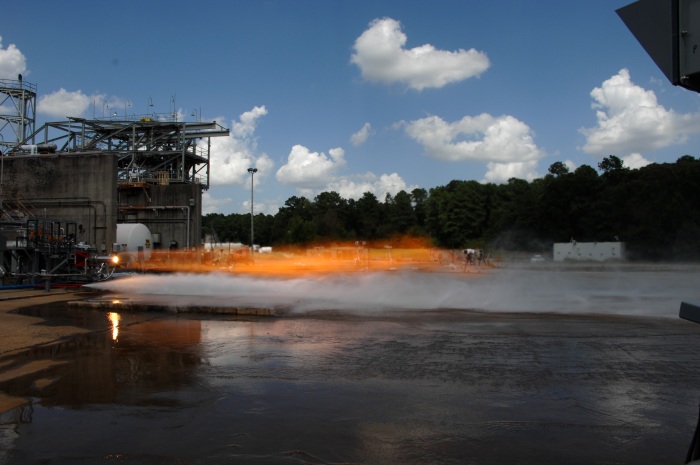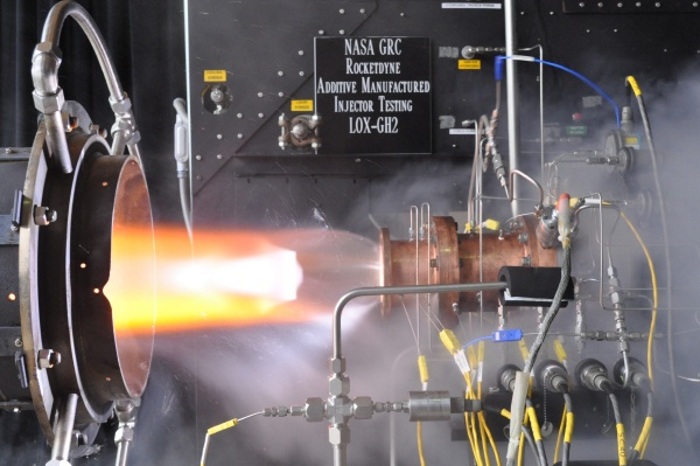An experiment that could’ve gone terribly wrong proved a rousing success — NASA engineers have successfully completed a hot-fire test using a rocket outfitted with 3D-printed parts at the Agency’s Marshall Space Flight Center in Huntsville, AL.

Specifically, the engine injector, one of the rocket’s most complex parts (it’s responsible for sending propellant into the engine), was the item created using additive manufacturing. Its design was inputted into the 3D printer’s computer, whereupon the printer began building each part of the injector by layering metal powder and fusing it together with a laser (referred to as selective laser melting).
This process allowed the rocket’s designers to create an injector with an astounding 40 different spray elements.

“We wanted to go a step beyond just testing an injector and demonstrate how 3-D printing could revolutionize rocket designs for increased system performance,” said Chris Singer, director of Marshall's Engineering Directorate. “The parts performed exceptionally well during the tests.”
Typically speaking, a rocket engine injector is made up of 163 individual parts, all of which need to be assembled in order for it to function. The 3D-printed injector, on the other hand, requires just two parts. This not only saves NASA time and money, it also allows engineers to focus on building parts to enhance the rocket’s engine performance.
In regards to the actual experiment, two rocket injectors were test for five seconds each, producing 20,000 pounds of thrust. Designers assigned to the project created complex geometric flow patterns which allowed oxygen and hydrogen to swirl together before combusting at 1,400 pounds per square inch and at temperatures up to 6,000 degrees Fahrenheit.
Worth noting is the two injectors were created by two separate companies — Solid Concepts (Valencia, CA) and Directed Manufacturing (Austin, TX).
“One of our goals is to collaborate with a variety of companies and establish standards for this new manufacturing process,” explained Marshall propulsion engineer Jason Turpin. “We are working with industry to learn how to take advantage of additive manufacturing in every stage of space hardware construction from design to operations in space. We are applying everything we learn about making rocket engine components to the Space Launch System and other space hardware.”
3D printing helps speed rocket research up an incredible amount. Engineers at Marshall have the ability to design and produce small 3D printed parts quickly, and apply modifications quickly.
“Having an in-house additive manufacturing capability allows us to look at test data, modify parts or the test stand based on the data, implement changes quickly and get back to testing,” said Nicholas Case, a propulsion engineer leading the testing. “This speeds up the whole design, development, and testing process and allows us to try innovative designs with less risk and cost to projects.”
Among some of the other items Marshall engineers are 3D-printing: rocket nozzles, complex injectors, and more.
To see the 3D-printed rocket injectors in action, check out the clip below:
Story via NASA
Advertisement
Learn more about Nasa





